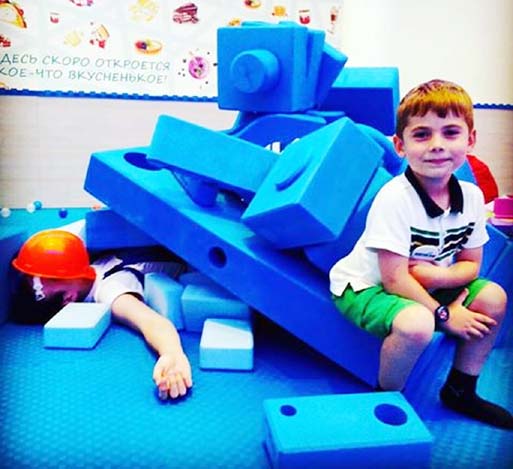
Zrinka Peters :
“Mom, I’m bored! I need something to do.” While this might be a common refrain these days, parents of a generation or two ago would likely have answered the complaint with “Go and find something to do yourself.” Today’s parents often change the answer to “Well, Bob the Builder’s on in ten minutes”, or “We’re leaving for soccer practice soon.”
There’s no doubting that what kids fill their time with has changed pretty dramatically over the past decades. David Elkind, author of The Power of Play, writes “Children’s play – their inborn disposition for learning, curiosity, imagination, and fantasy – is being silenced in the high-tech, commercialized world we have created. Toys, about which children once spun elaborate personal fables, now engender little more than habits of passive consumerism. The spontaneous pickup games that once filled neighborhoods have largely been replaced by organized team sports and computer games.”
Experts are now acknowledging that the loss of creative childhood play is having some negative consequences. Creative play develops imagination and creativity – tools which are now recognized as important down the road in higher levels of math and science – as well as intellectual, social and emotional development.
Aside from child overweight and obesity figures, which seem to be rising relentlessly each year, the lack of creative play (which is often active play) also seems to be having an impact on emotional and cognitive development. Studies have shown that kids who are involved with plenty of self-directed creative play develop better abilities to regulate their own behaviors and emotions, compared to other children. Creative play gives kids a change to practice policing themselves. “Creativity and imagination are like muscles; if you don’t use them, you lose them,” Elkind says.
So what can parents do to help strengthen their child’s creativity and imagination through creative play? Here are a few tips: Offer a safe environment. Many parents today are afraid of letting their children play alone outside because of concerns for their safety. But in most areas there are still relatively safe environments where kids can get out and explore on their own or with unobtrusive adult supervision – backyards, neighborhood cul-de-sacs, school or community playgrounds, even parks.
Provide “open-ended” things to do or play with. These are items that can be used or manipulated in multiple ways, like blocks, legos, play-dough or arts supplies. Open-ended games, like acting out dramatic plays, puppet shows and story-building (where one person starts a story and others build on it line by line), are also great for exercising imagination and creativity.
Avoid over-scheduling and over-structuring. Elkind writes “Over the past two decades, children have lost twelve hours of free time a week, including eight hours of unstructured play and outdoor activities.”
A significant amount of this time has been replaced with TV and other forms of media entertainment. But that’s not all. In an effort to help kids “get ahead” in skill and intellectual development, organized sports, lessons, and camps of every kind are filling up with three- and four-year olds.
Unstructured, creative play is often seen as a waste of time, since the child doesn’t appear to be “learning” anything. So don’t feel guilty about allowing so much “free” time – research shows that time spent in creative play is not really “wasted” after all.

